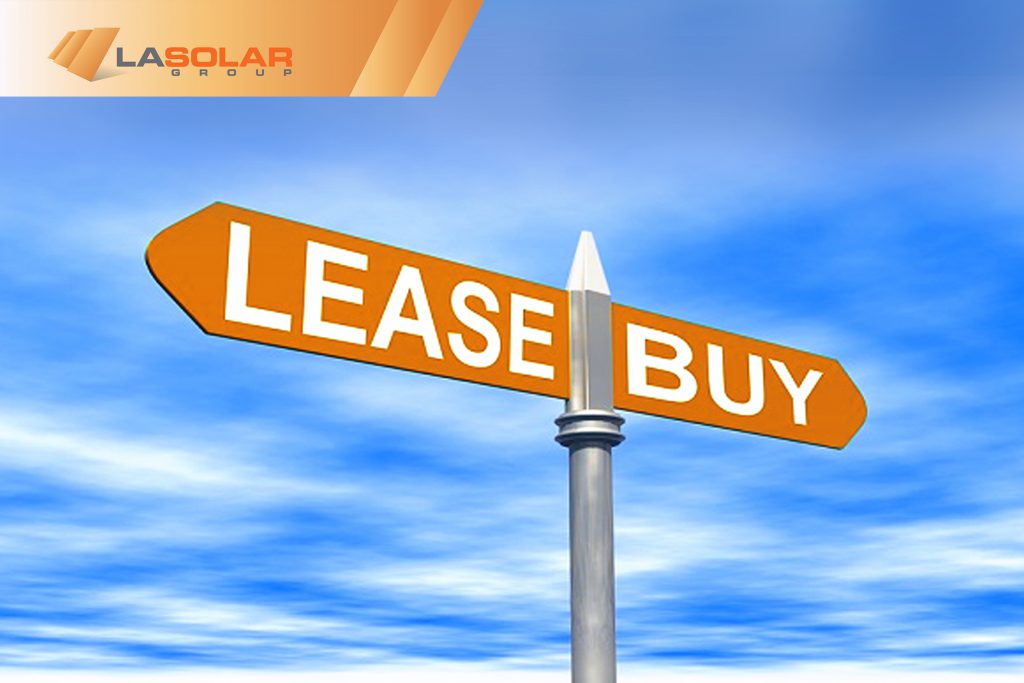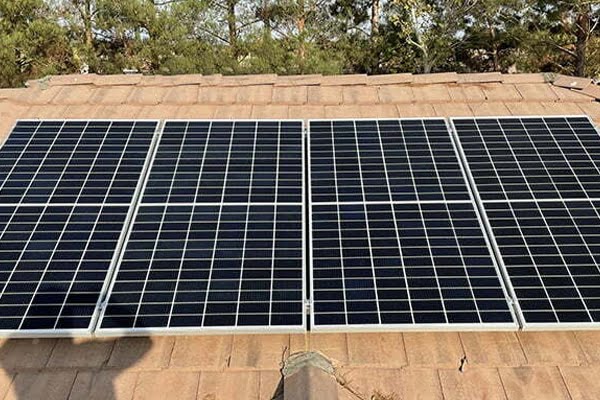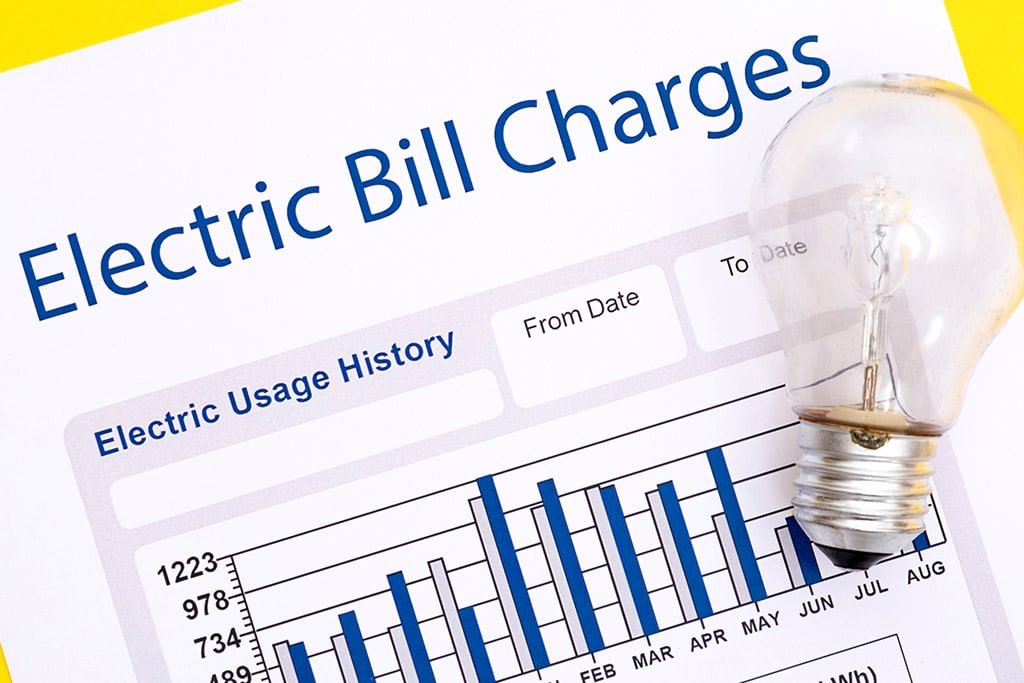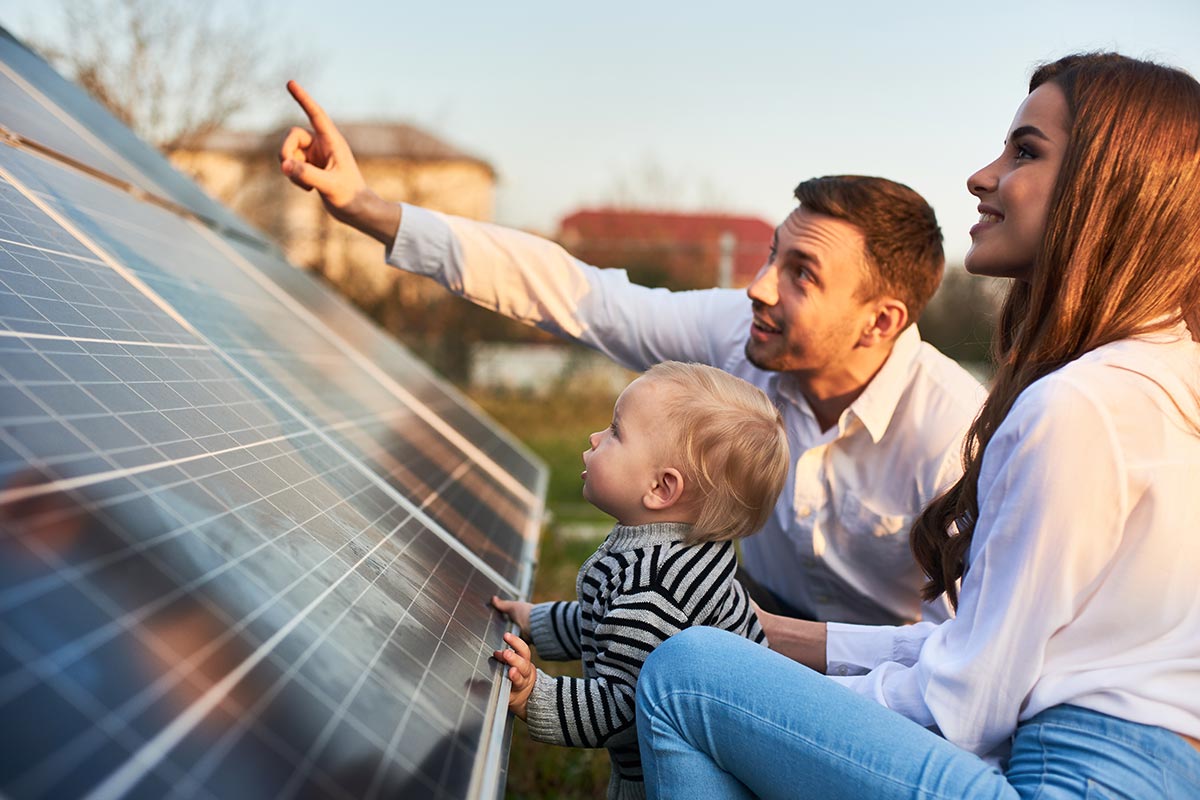Deciding whether you want to buy, lease, or finance your solar system and determining which options your contractor of choice offers is the third key factor to consider in your search. There are benefits to each, but there are also some misconceptions that might confuse homeowners.
Buying Solar.
Buying a new solar system is not like buying an appliance, luxury item, or home improvement. Solar is an investment, one which will provide a 15-25% return, guaranteed for the next 25 years, by reducing your electric bills. A solar system investment on average will pay itself in 6-9 years, depending on how much the system will offset your electric billing payments. If you’re viewing solar in this light, you’ll want to pay with cash (especially with current low market prices), so that you may start seeing your returns immediately. The key is to choose a company that can do the project right and provide you clear expectations of your savings over a long period of time.
*Pro Tip: Save More With Incentives: Be sure to ask your solar contractor about any local, state, or federal incentives that will discount the cost to install the system. Some municipal utilities in the cities of Los Angeles, Glendale, Pasadena, and Burbank offer incentives to discount the cost of going solar and also incorporate special lottery rebates to homeowners that install solar.
Leasing Solar & Power Purchasing Agreements (PPA).
The current solar leasing model started back in 2010. By offering solar leases, third-party finance companies and solar companies reduced risks for homeowners worried about production and maintenance issues. Mass-market solar technology was still relatively new and uncertain so customers needed peace of mind. This led to the popularity of options such as a 20-year power purchase agreements (PPA), which guaranteed that leasing customers would pay a fixed low price for power from their panels for twenty years. Similarly, leases were modeled after those for cars, with a 20-year bumper-to-bumper warranty and $0 down.
If you lease your solar panels, a solar company will install and own the solar equipment on your property for a given amount of time—usually about 20 years. This allows you to pay $0 up-front for power generated by solar. The leased system comes with 20-year complete warranty, including a power production guarantee: If the system does not produce the guaranteed amount of power, then no payment needs to be made for solar production. This is a popular choice for many homeowners.
Leases and PPAs come with two options: 0% escalator and 2% or 3% escalator. The escalator determines by what percentage solar payment goes up every year. If your contract offers an escalator of 0%, then your solar payment stays the same over next 20 years. If your escalator is 2%, then your rate will go up 2% every year. If the residential home has signed a lease for 23 cents per kWh with an escalator of 2%, then it is not a good lease.
For example: Let’s say your solar production is 9,000kWh. Your first year’s solar payment will be 9000 x $0.23, which is $2,070. $2,070 X 1.02 is $2,111. Jumping to year three, your solar payment would be $2,111 X 1.02, which is $2,153. Following this trajectory, your solar payment for year 20 would be approximately $2,070 x 1.40, or $2,898. See the graph below for another example:
 Image courtesy of solarpowerrocks.com
Image courtesy of solarpowerrocks.com
Some homeowners realized this when they tried to sell their homes. With very high solar rates and escalators, new buyers weren’t interested in taking over payments. This gave leases and PPAs a bad reputation even though it was simply the terms and not the concept itself that needed adjusting. If a solar lease or PPA is presented correctly with proper production estimation and reasonable applicable rates and escalation then leasing is even better than financing. Since 2015, solar companies adjusted for this and leases and PPAs have become more attractive in general. It’s still important to shop around to get the best deal otherwise you’ll end up with a contract that isn’t as great as you originally thought.
Financing Solar.
Before 2015, financing solar was not a very popular option because very few banks understood solar and therefore were not able to make loans for it. Eventually the market growth forced banks to get educated about solar to provide specialized loan programs with affordable rates and payments. As financing became more popular and simpler, an expansion of private lending programs we established to help homeowners finance their solar systems like PACE (Property Assessed Clean Energy) – designed specifically for energy efficiency upgrades or renewable energy installations for residential, commercial and industrial property owners.
Many homeowners like the idea of financing because they would rather own their system than lease it. Some may also have had a bad experience with a lease or PPA several years ago, and want to try something different. However, unlike buying or leasing, systems purchased through financing do not have production guarantees or maintenance warranties in terms of payments. Production and system guarantees are provided by contractor but if the system fails, homeowners must continue making payment toward their loan regardless of the system being functional or not. By contrast, homeowners with a PPA lease are not required to continue making payments until the system works and produces power. Hence, banks that providing financing get paid regardless of system’s functionality and performance. Keep in mind most finance companies will charge contractors extra fees for the low interest rates in order to attract homeowners with a variety of loan options.
*Pro Tip: Finding Financing Without Credit: PACE financing is a program that allows homeowners to attach solar payments to property taxes. PACE does not have any credit requirements, and is based only on home equity and property taxes. This program is great for homeowners who might not qualify for traditional financing due to income/debt ratio or other finance criteria. PACE financing does also carry a higher interest rate than typical solar system lenders, but that interest rate is tax deductible.
A Solar Illustration.
Let’s review potential leasing and financing options with a brief illustration. There are three neighbors: John, Randy, and Sam. All three want to add solar systems to their houses, but they take different approaches:
- John: Signs up for solar lease in 2014. His electricity bill from the utility is 24 cents per kWh. He signs a solar lease for 20 cents per kWh with an escalator of 2%. After 5 years, John’s solar rate is 22 cents per kWh—just two cents less per kWh than if he had done nothing. This is not a great lease.
- Randy: Financed his system through a solar finance company. Unfortunately, the installer went out of business and now there is no company to cover the warranty and make sure system is operational. Randy will have to continue to make payments whether or not the system works.
- Sam: Got a lease similar to John’s, but his lease is for 15 cents with an escalator of 0%. After 5 years, his rate will stay the same at 15 cents per kWh. Sam got a great deal because his system is covered by 20-year warranty and he is paying a steady and reasonable rate which is much lower than utility rate. Sam also has a production guarantee, so if the system does not produce power he won’t have to pay the installer.
Finding a Contractor Who Offers What You Want.
Not all contractors offer buying, leasing, and financing options because it takes a great deal of skill, knowledge, and patience to do so. Most contractors are in business to sell projects and make money, and don’t care enough to let the customer choose the purchasing option that is right for them. Always consult with a contractor who can provide you with all the options, take your needs into account, and protect your interests.
Now You Are Ready To Start Your Solar Journey
If you search for “solar panels” online, you’ll have to navigate a blizzard of paid ads for solar contractors. Determining which is best requires a bit of research. Once you’ve looked at installers, equipment, and payment/financing options, you’ll be ready to make an informed choice on your own. Below is a breakdown of the most popular modules in the market to help educate and guide you through your solar journey. If you have any questions about going solar, including anything mentioned here, we’d like to hear from you.







